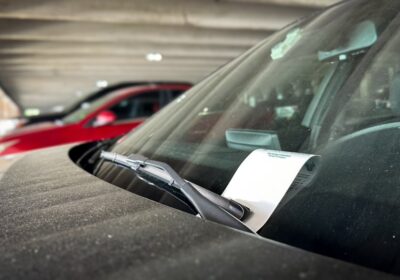Library looks at student concerns over quiet areas

As part of trying to handle student complaints about the fifth floor being noisy, library staff is putting up new signs.
ORACLE PHOTO/CHAVELI GUZMAN
There have been complaints by students about disruptive behavior on the newly renovated fifth floor of the library. Library officials, however, are working on solutions.
The unveiling of the newly-renovated fifth floor in the library has brought more traffic to the floor and some unwanted noise. Some students have taken notice to disruptive behavior in what is supposed to be a “quiet-zone.”
Joshua Kennedy, a freshman majoring in psychology, said he has to deal with noisiness from some students camping out on the fifth floor.
“I really don’t mind low talking on floors where talking is allowed, but on something like the fifth floor, where it’s supposed to be quiet, just a couple people having a conversation in a quiet lounge can be pretty obnoxious for the whole room, even with headphones,” Kennedy said.
“One time when I was on the fifth floor, I sat next to this guy who didn’t seem like he’d cause a problem, but immediately two of his friends pulled up chairs with him and started talking and being distracting,” Kennedy said. “I just moved when I saw some other desk open up. If this happened on any other floor, I wouldn’t really care. The fifth floor is really not for this kind of behavior.”
While the student-designed floor offers perks such as abundant outlets and comfortable seating, there are still some kinks that need to be worked out.
Todd Chavez, dean of the USF libraries, said there have been complaints related to disruptive behavior on this floor, but USF is working on addressing them.
“Yes, (there’s been complaints) and here’s what we’ve done to address it,” Chavez said. “We’ve done two things, actually three things. We’ve put up a lot more signage than we had previously placed on the fifth floor.
“The second thing we did was put these small QR code postcards. We lay them on the tables to remind students that it’s a silent study space, but also at the same time, let students know that if they’re having a problem, to go straight to the website we’ve set up where you could indicate ‘hey, I’m on the fifth floor and someone’s being really loud’ and then we dispatch staff to come upstairs and quiet it.”
Additionally, Chavez said the system is working on setting up standards for hiring monitors for the floor who would make rounds regularly to help enforce the quiet zone rule.
When it is necessary for staff to get involved to resolve noise complaints, Chavez said they do their best to handle the matter as respectfully as possible.
“Students are more concerned about group study activities and people talking in a conversational voice,” Chavez said. “So, what we do once we determine that the noise is there, we’ll approach the people involved and we’ll say to them, ‘hey, look I’m sorry to bother you all, but this is a silent study floor, and we’d like to ask you to bring your noise level down to zero.’”
According to Chavez, there are certain times of the day with higher a frequency of noise complaints.
“What we’re seeing is that patterns develop,” Chavez said. “At certain times of the day, we’ll see more talking than other times of the day. My experience is, it’s usually worst from about 2-4:30 (p.m.), right in that time period. That’s usually when we see a larger number of reports.”
Mariana Kobayashi, a junior majoring in business management, said it can sometimes be hard to find a non-distracting place to study, but agrees there are solutions.
“From my experience, it can be difficult to find a quiet place to study,” Kobayashi said. “In the past, if I knew the library was going to be crowded, I have made study room reservations. That way my study group could focus and wouldn’t be distracted by background noise.”
Chavez said he blames the rise in complaints on the increased amount of study spaces available to students on the fifth floor since the renovation.
“We had 115 seats on the fifth floor, before the renovation,” Chavez said. “We have 450 seats now. When you go from 115 to 450, it’s humanly impossible not to see an uptick, particularly when you identify the space as a quiet space. From our perspective, it’s not an epidemic, but it’s enough that we’ve paid attention to it and we’re trying to react to the students who feel like ‘hey, this really needs to be quiet.’”






